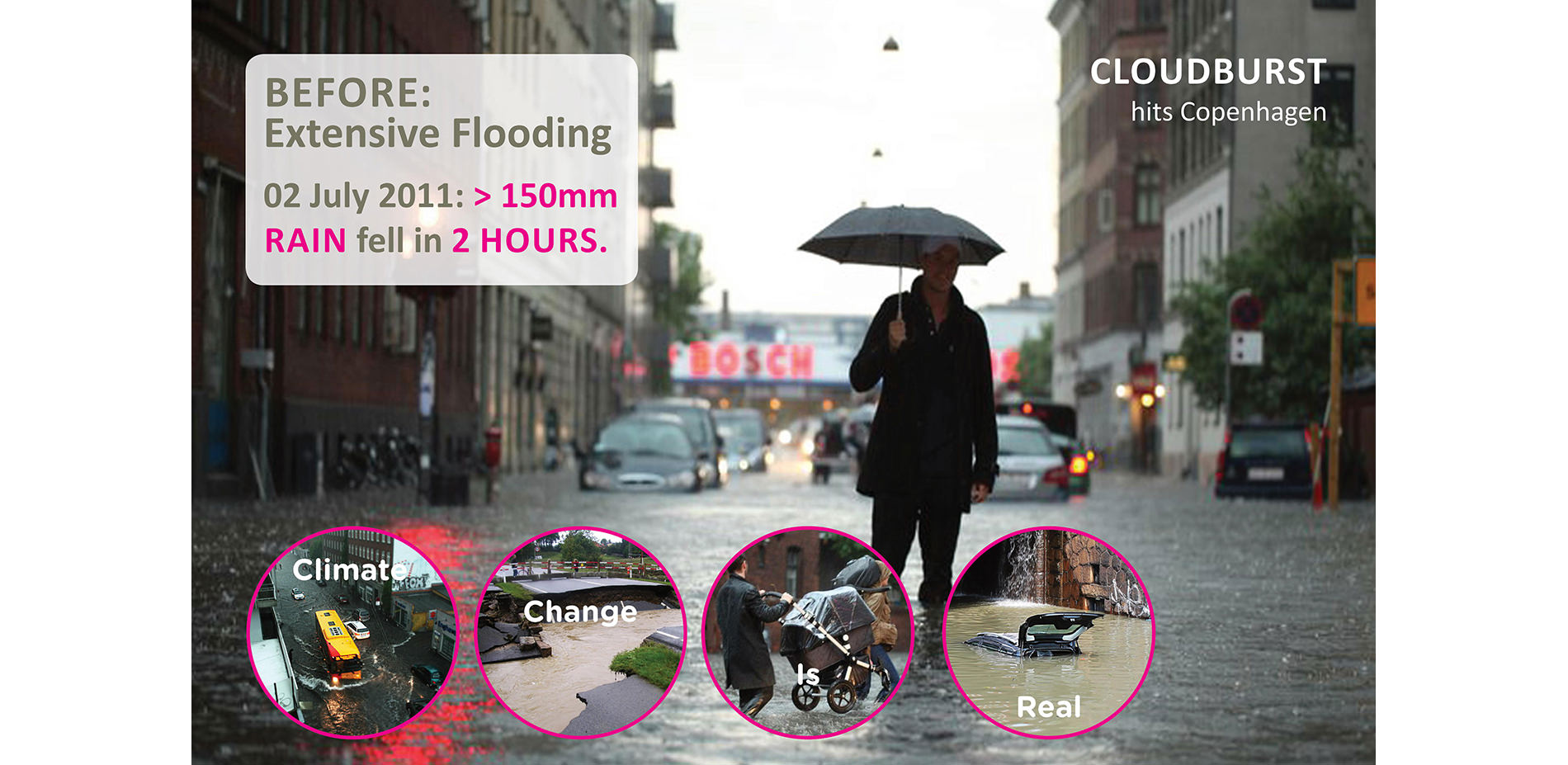
Game changer
July, 2011 - Copenhagen was hit by a destructive Cloudburst leaving 50,000 homes without heat for a week, impacting over 90,000 insurance claims, and causing upwards of USD $1 billion in property damage, transport delays, and production halts.
Photo Credit: Ramboll and Ramboll Studio Dreiseitl
Media: Please submit high-resolution image requests to images@asla.org.
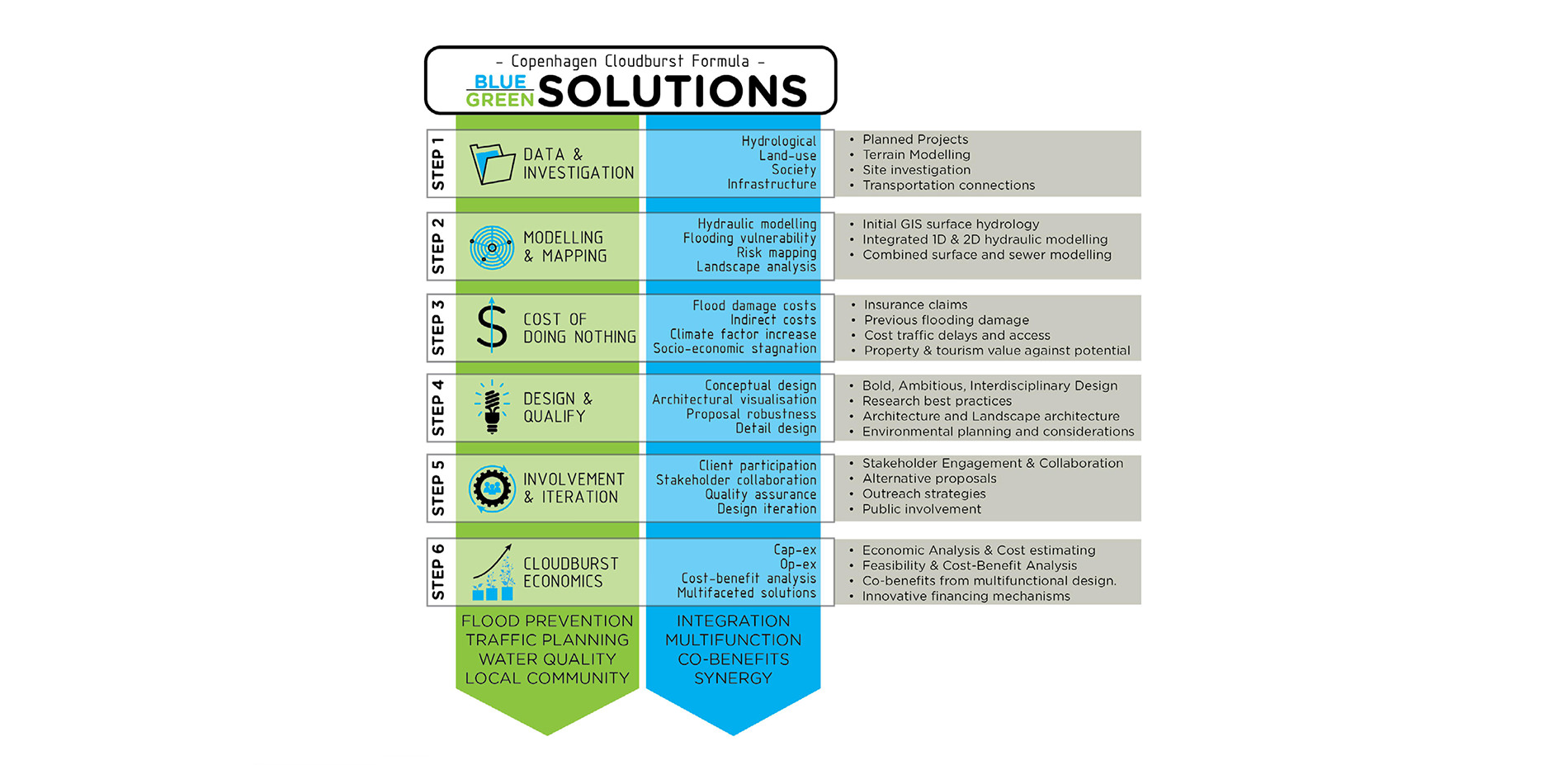
Copenhagen Cloudburst Formula
A Liveable Cities approach for mitigating Cloudbursts - Blue-Green surface solutions with reduced piping infrastructure - is proven to be more investment friendly than piped solutions and creates diverse direct and indirect benefits for socio-economic conditions.
Photo Credit: Ramboll and Ramboll Studio Dreiseitl
Media: Please submit high-resolution image requests to images@asla.org.
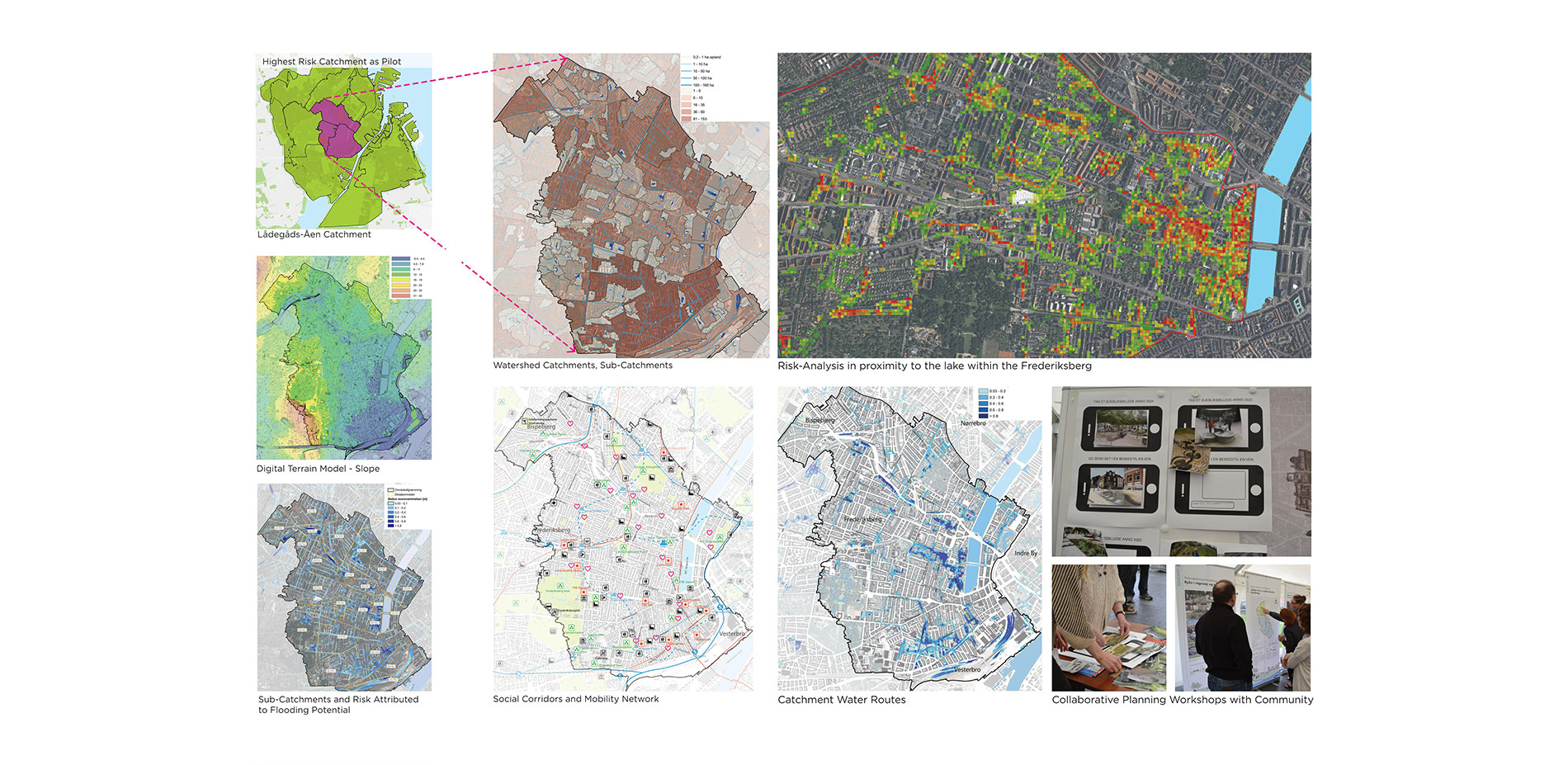
Analysis-Based Solutions
The Lådegåds-Åen catchment was selected as a prototypical test area due to its high risk to flooding and sea surges. Comprehensive site analysis led to establishing the Copenhagen Cloudburst Formula and a Cloudburst Toolkit of urban mitigation strategies and components.
Photo Credit: Ramboll and Ramboll Studio Dreiseitl
Media: Please submit high-resolution image requests to images@asla.org.
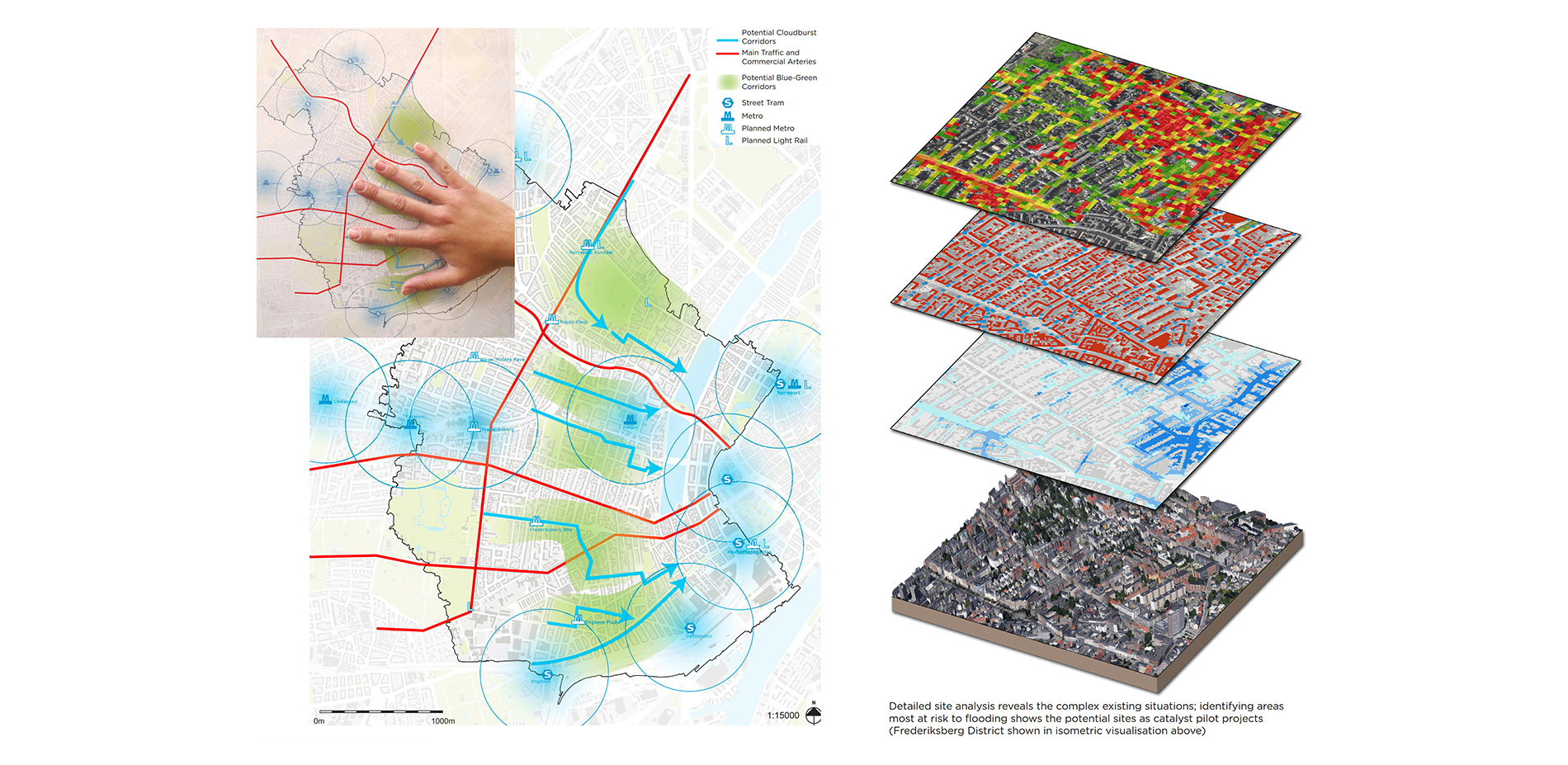
Common Vision
Within the Lådegåds-Åen catchment, a system of Cloudburst boulevards follow the ‘fingers’ of the existing river network, identifying opportunities for investment along green corridors where surface solutions ensure mitigation is visible, interactive. Payback = a vibrant, liveable city.
Photo Credit: Ramboll and Ramboll Studio Dreiseitl
Media: Please submit high-resolution image requests to images@asla.org.
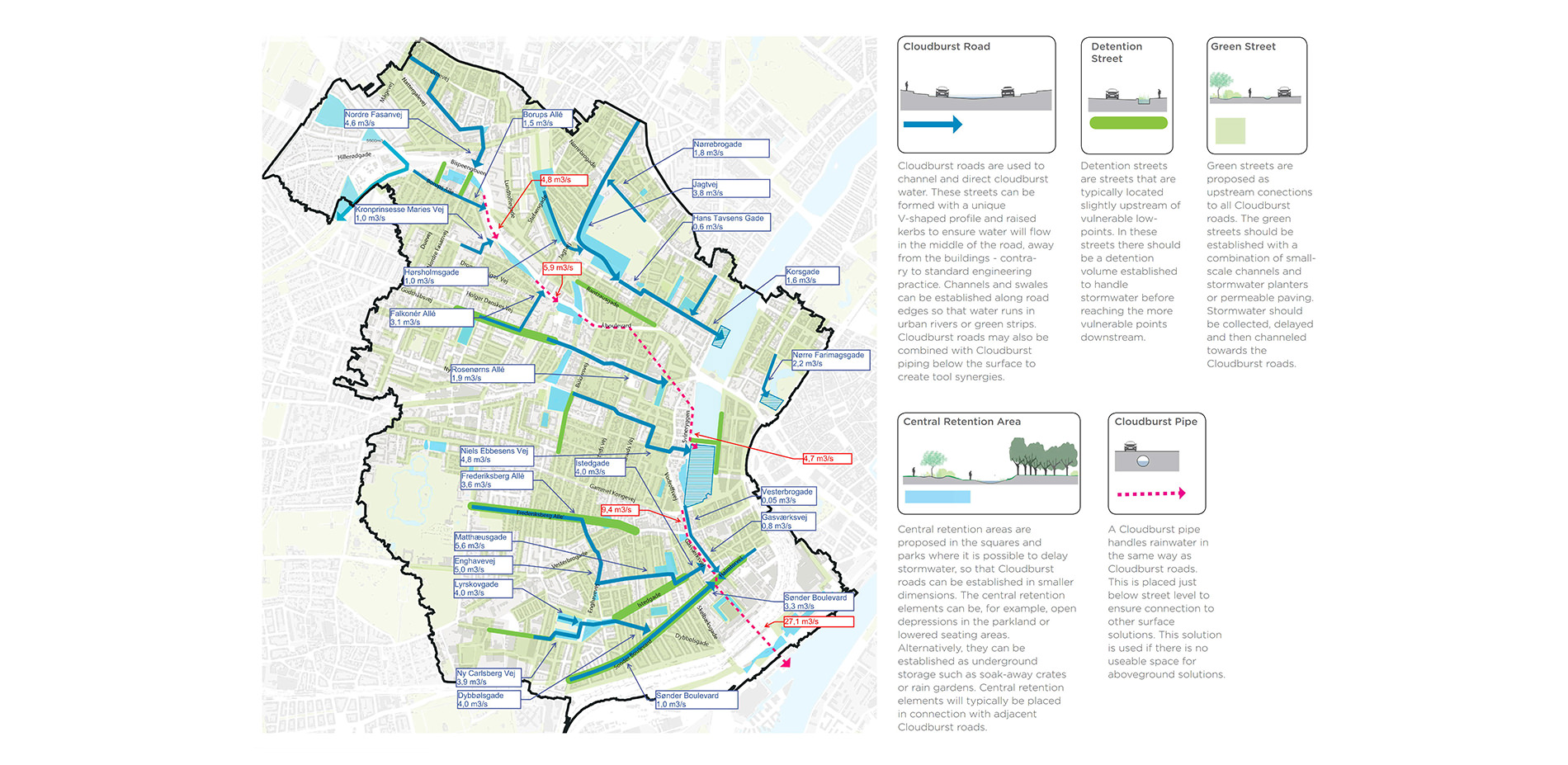
Evaluating Development Options
The masterplan with the highest concentration of Blue-Green Tools and reduced pipe sizes results in higher quality open spaces, lower investment costs, and more flexible mitigation strategies. Resiliency necessitates combining the best of existing infrastructure with low-tech solutions.
Photo Credit: Ramboll and Ramboll Studio Dreiseitl
Media: Please submit high-resolution image requests to images@asla.org.
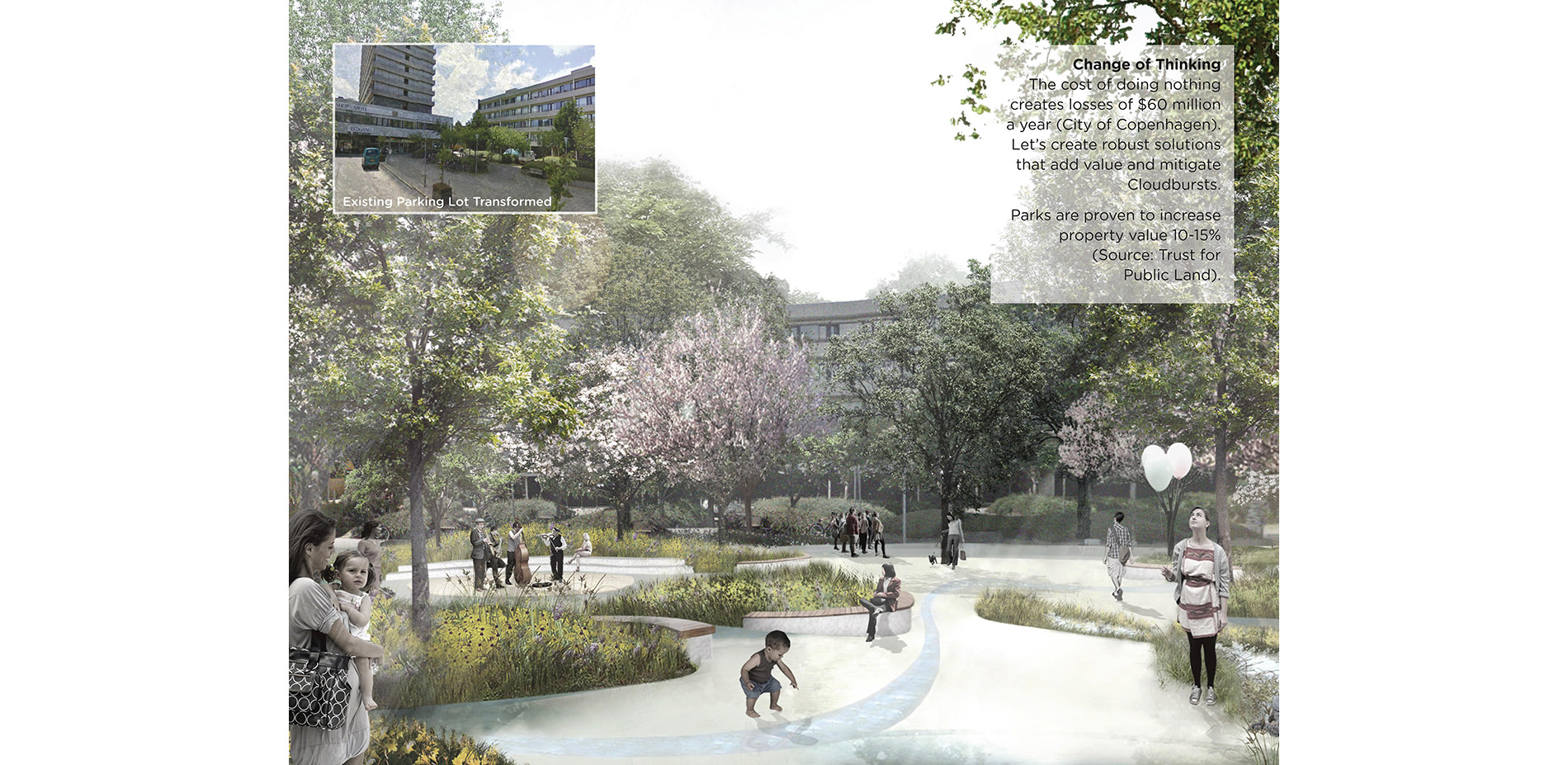
Change of Thinking
The cost of doing nothing creates losses of $60 million a year (City of Copenhagen). Let’s create robust solutions that add value and mitigate Cloudbursts. Parks are proven to increase property value 10-15% (Source: Trust for Public Land).
Photo Credit: Ramboll and Ramboll Studio Dreiseitl
Media: Please submit high-resolution image requests to images@asla.org.
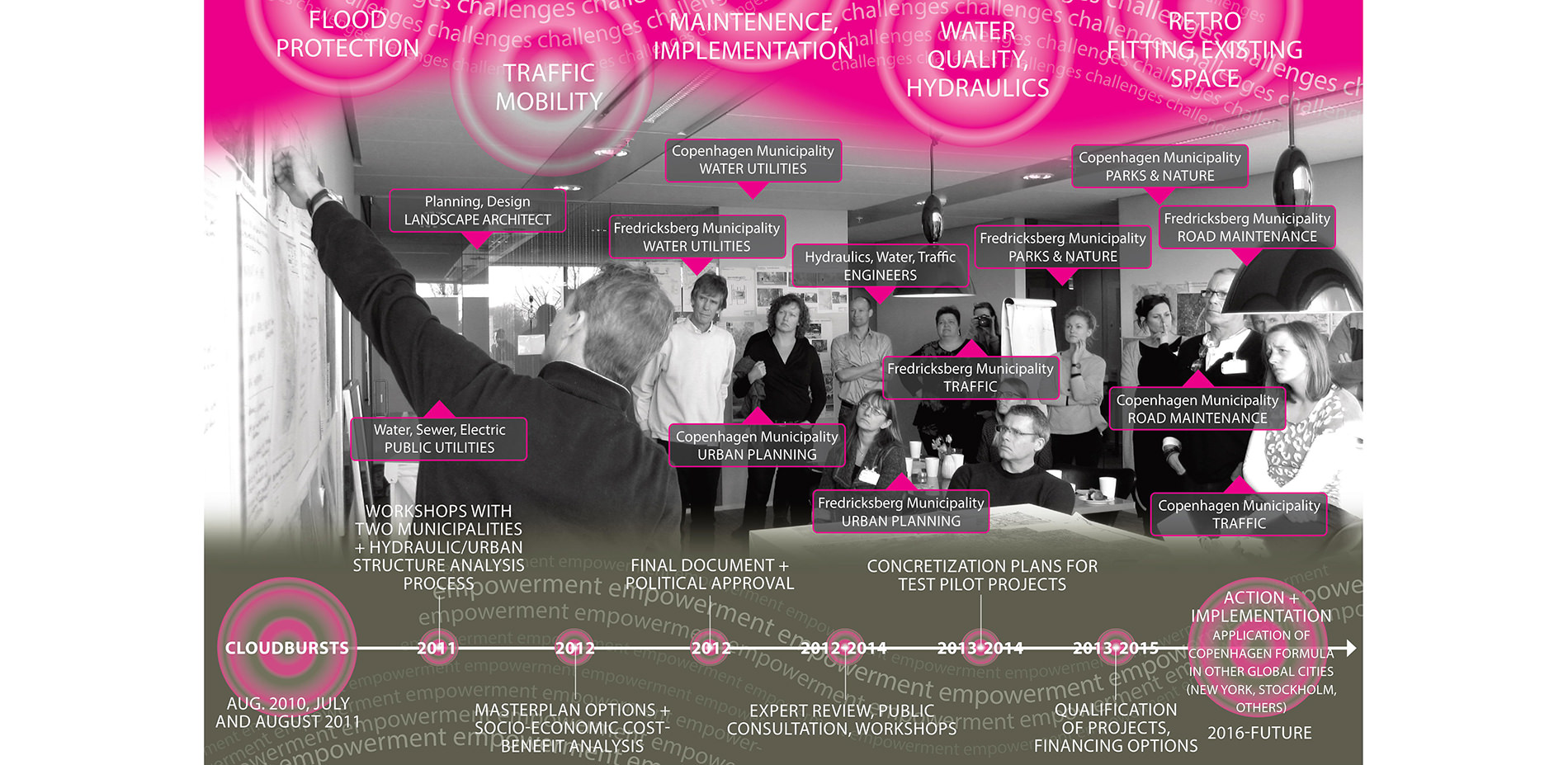
Public-Private Collaboration
The Copenhagen Formula adapts interdisciplinary approaches, moving away from silo-ist, isolated thinking. A common vision aligned engineers, hydraulic experts, GIS and information technologists, architects, planners, biologists, economists, communication specialists, and landscape architects with local citizens, investors, and politicians.
Photo Credit: Ramboll and Ramboll Studio Dreiseitl
Media: Please submit high-resolution image requests to images@asla.org.
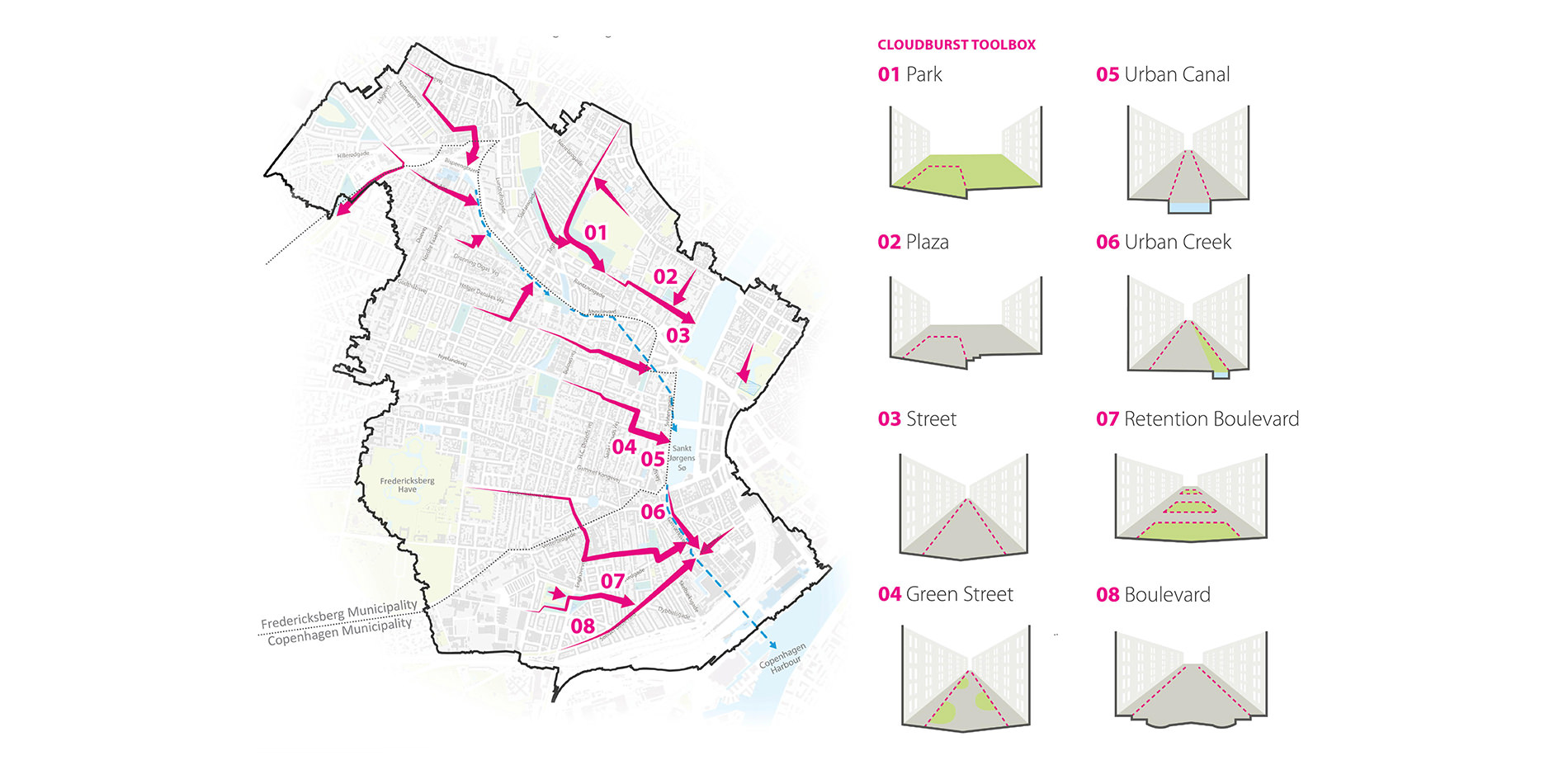
Cloudburst Toolkit
Eight Urban Intervention Tools were developed to mitigate common urban typologies - streets, parks, and plazas. The Cloudburst Toolkit combines hydraulic engineering (the ‘Grey’) with urban ecological engineering (the ‘Blue-Green’), establishing a model for universally-applicable flood mitigation strategies.
Photo Credit: Ramboll and Ramboll Studio Dreiseitl
Media: Please submit high-resolution image requests to images@asla.org.
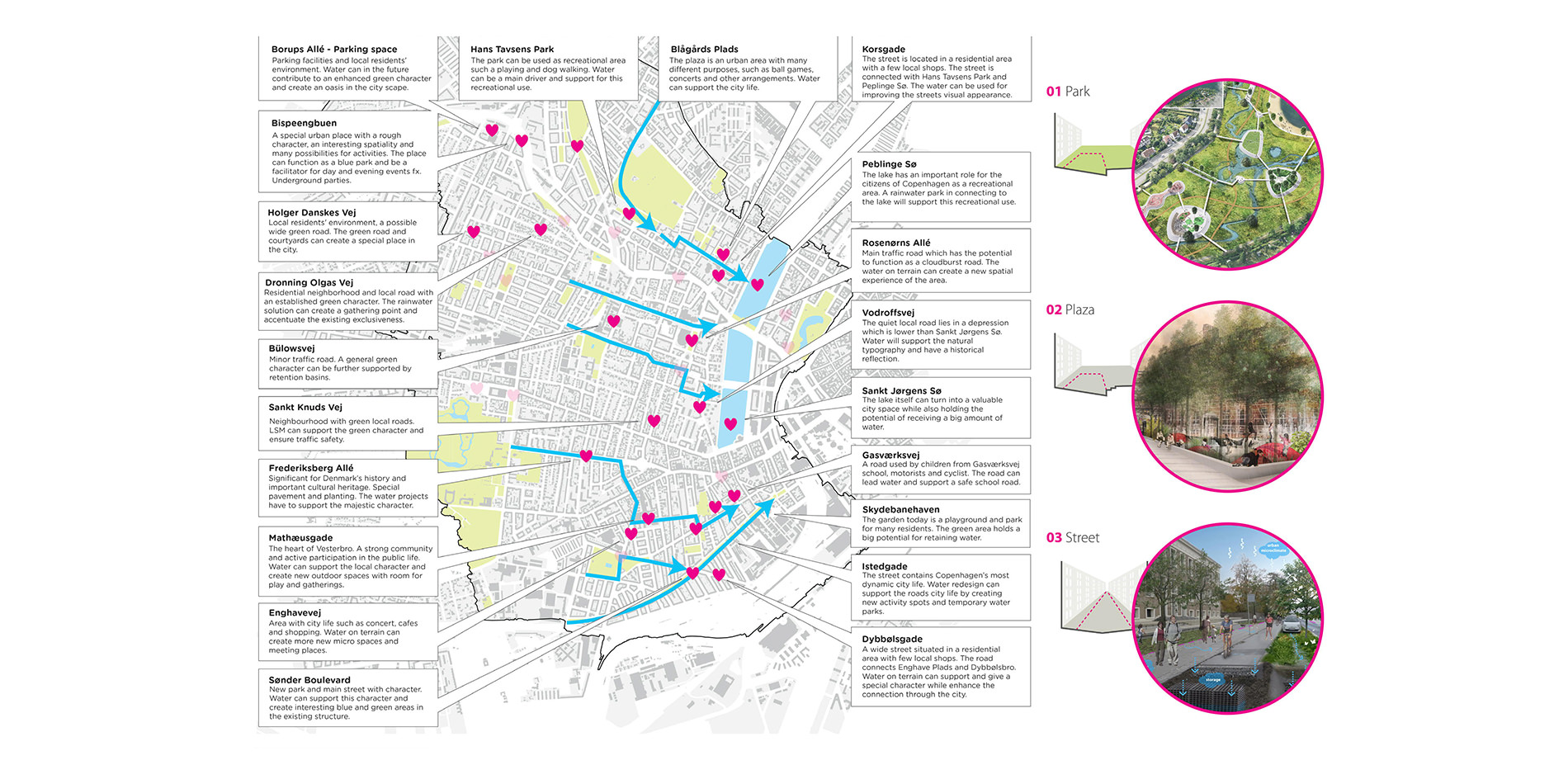
Selective Intervention
Hot Spots (sites suitable for implementing the “Cloudburst Toolkit”) were identified by the Engineer and Landscape Architect. Each tool is shown to demonstrate its applicability within the Pilot Project area as well as universal applicability as typology-based solutions.
Photo Credit: Ramboll and Ramboll Studio Dreiseitl
Media: Please submit high-resolution image requests to images@asla.org.
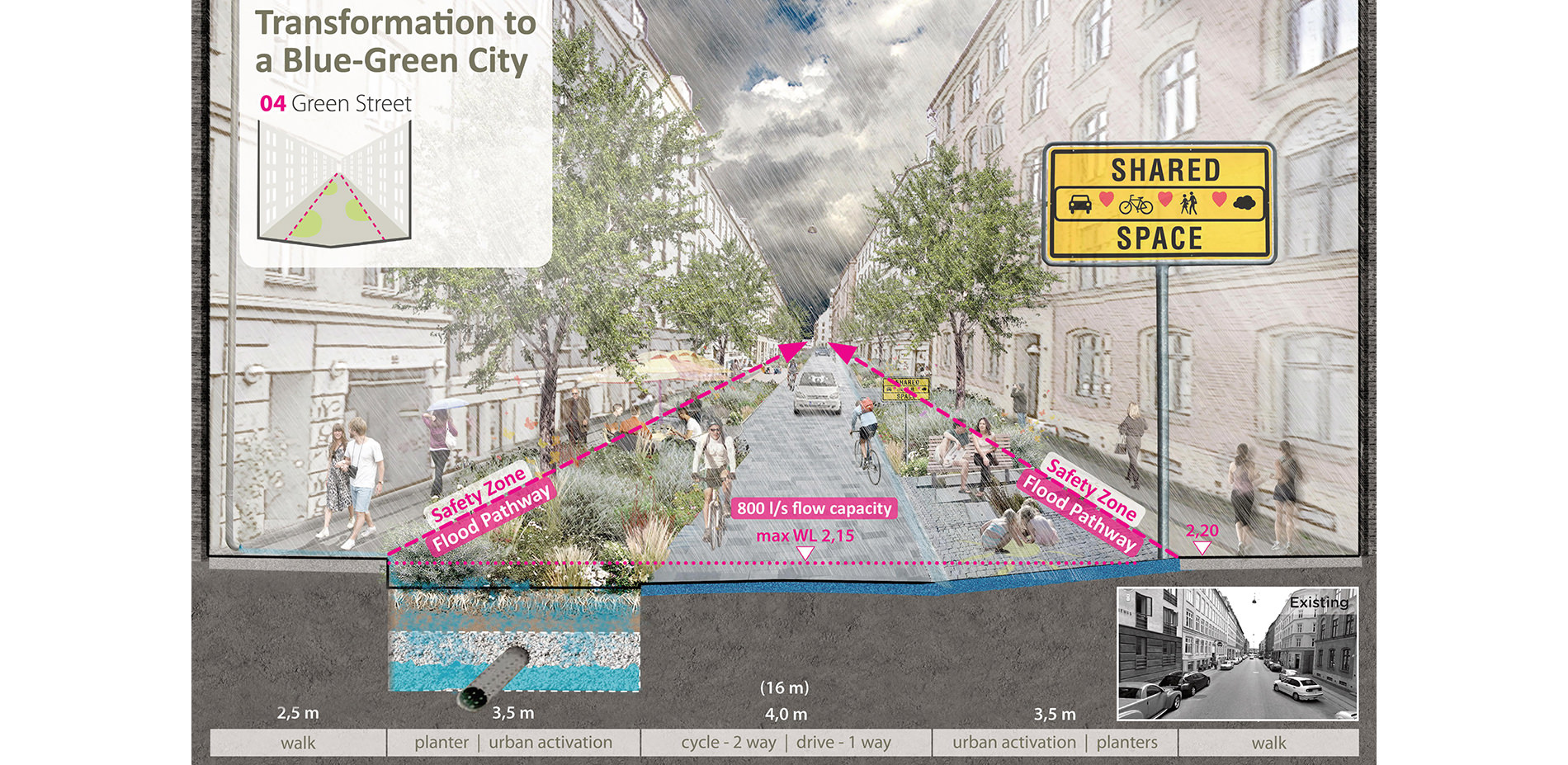
Tool: Green Streets
Green Streets utilise lowered street profiles to create a ‘Safety Zone’ and a ‘Flood Pathway’ corridor. Shared public spaces integrate pedestrians, cyclists, motorists, and alternative transportation along a common public realm. Solutions are visible public education tools.
Photo Credit: Ramboll and Ramboll Studio Dreiseitl
Media: Please submit high-resolution image requests to images@asla.org.
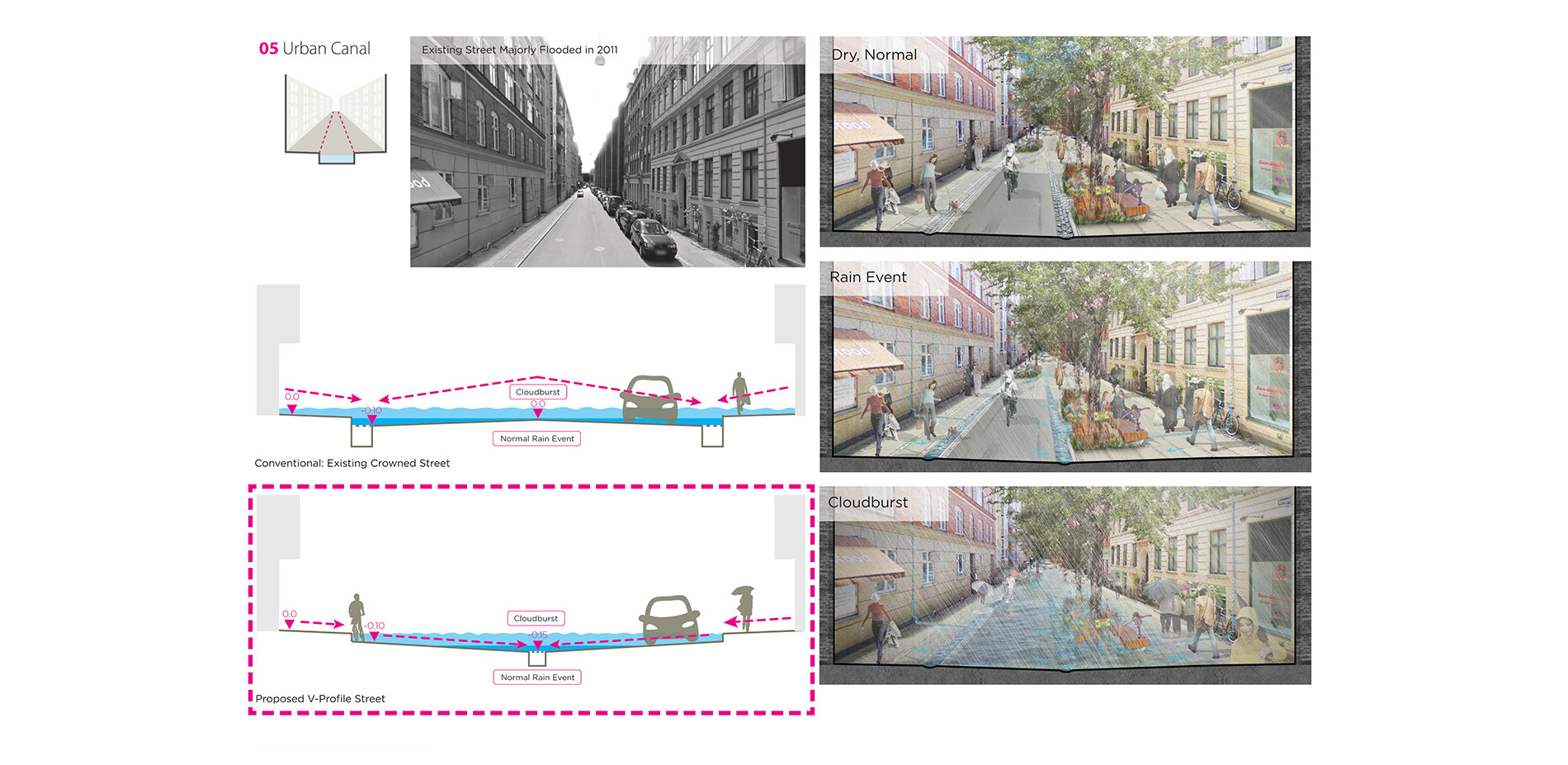
Tool: Urban Canal ‘V-Profile’
A V-Shaped road profile challenges conventional traffic engineering, retrofitting Cloudburst Streets by ‘flipping’ street layouts. The radical change allows street widths to be reduced while increasing retention capacity to handle daily and extreme rain events.
Photo Credit: Ramboll and Ramboll Studio Dreiseitl
Media: Please submit high-resolution image requests to images@asla.org.
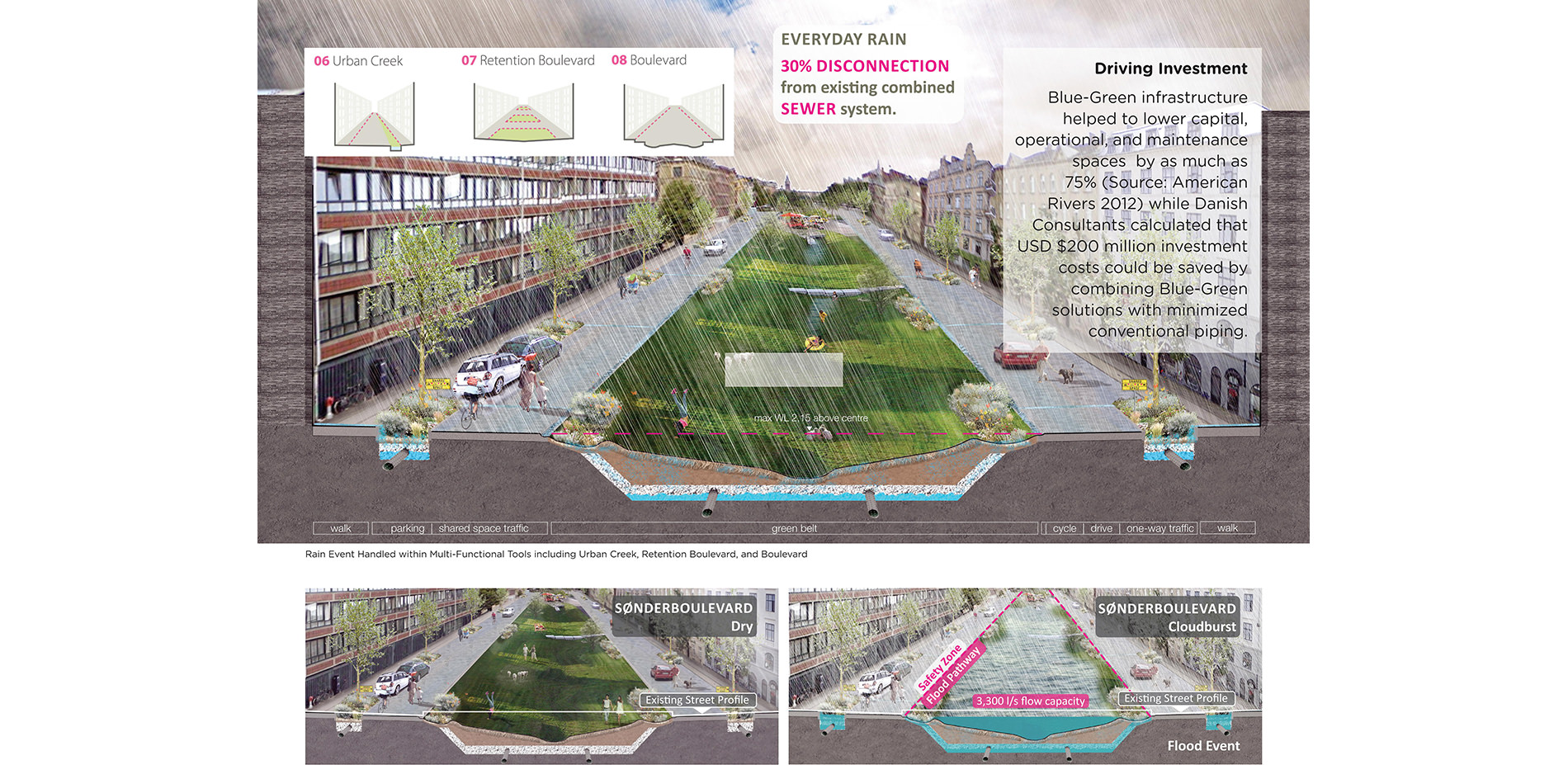
Driving Investment
Blue-Green infrastructure helped to lower capital, operational, and maintenance spaces by as much as 75% (Source: American Rivers 2012) while Danish Consultants calculated that USD $200 million investment costs could be saved by combining Blue-Green solutions with minimized conventional piping.
Photo Credit: Ramboll and Ramboll Studio Dreiseitl
Media: Please submit high-resolution image requests to images@asla.org.
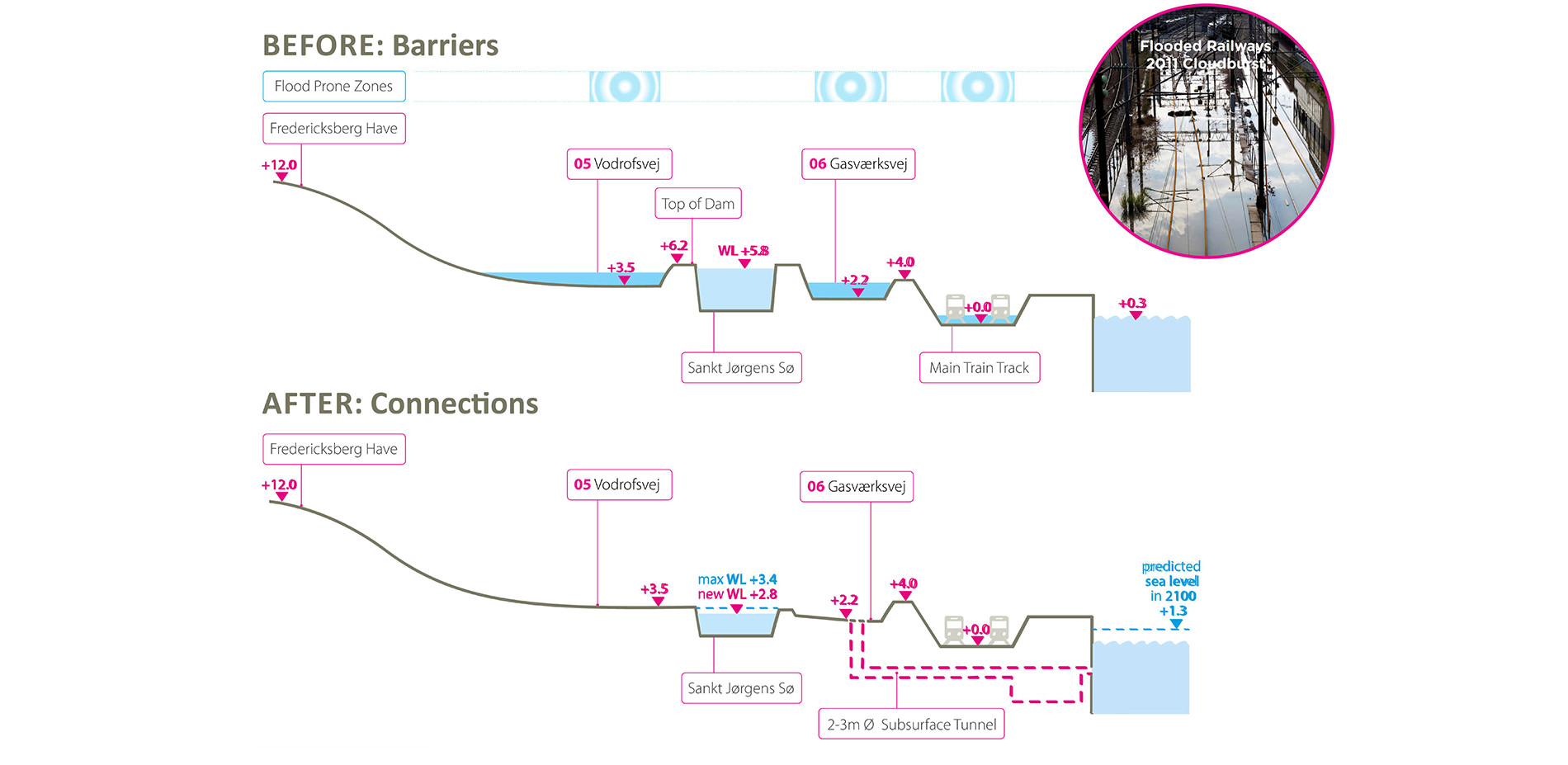
Testing Theories
The lake currently lies higher than surrounding green spaces. Removing the physical barrier to the waterfront, creating a bypass tunnel, and combining ‘Blue-Green’ techniques with ‘Grey’ piping creates a new place for people while mitigating flood event overflow.
Photo Credit: Ramboll and Ramboll Studio Dreiseitl
Media: Please submit high-resolution image requests to images@asla.org.
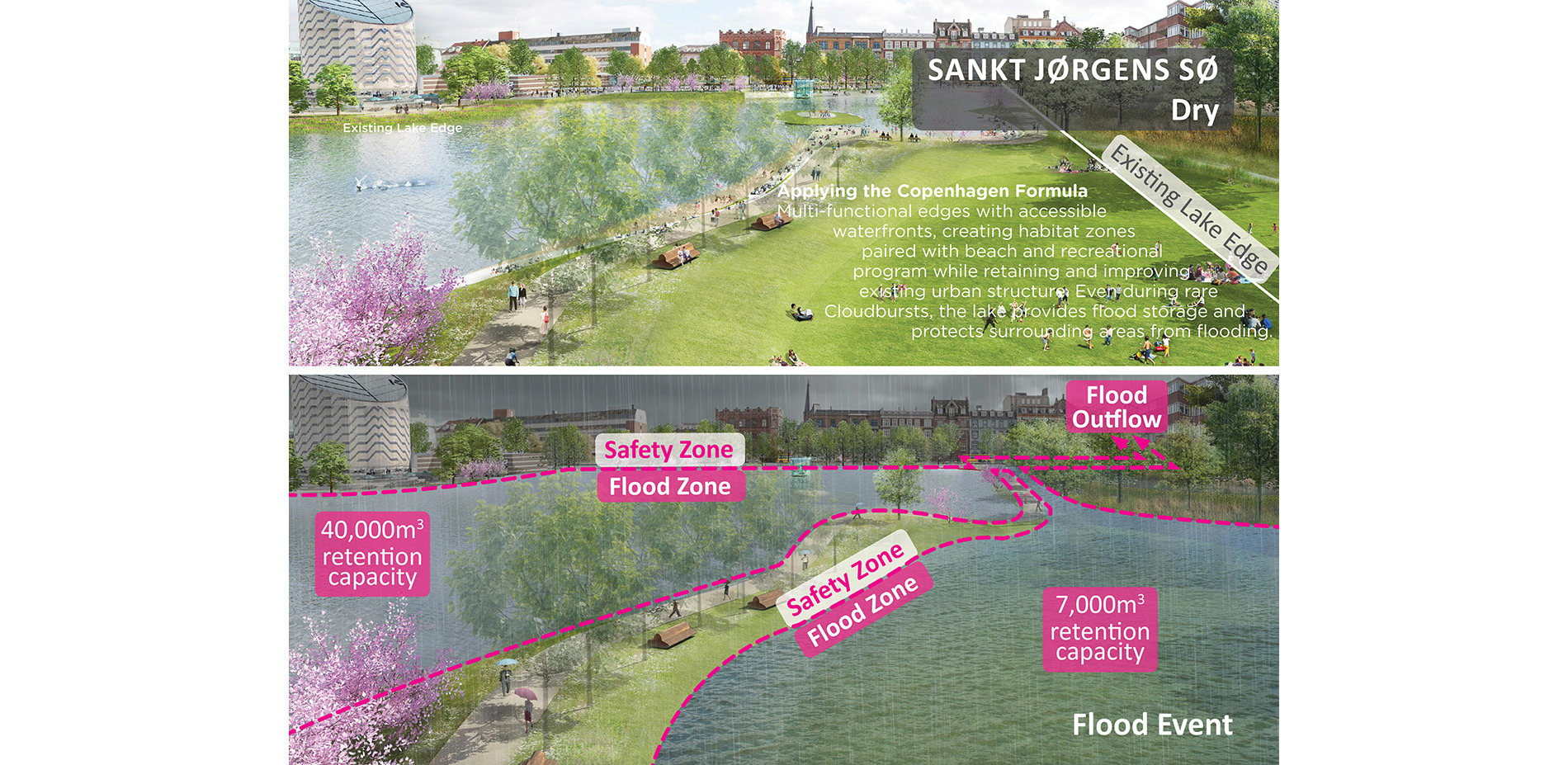
Applying the Copenhagen Formula
Multi-functional edges with accessible waterfronts, creating habitat zones paired with beach and recreational program while retaining and improving existing urban structure. Even during rare Cloudbursts, the lake provides flood storage and protects surrounding areas from flooding.
Photo Credit: Ramboll and Ramboll Studio Dreiseitl
Media: Please submit high-resolution image requests to images@asla.org.
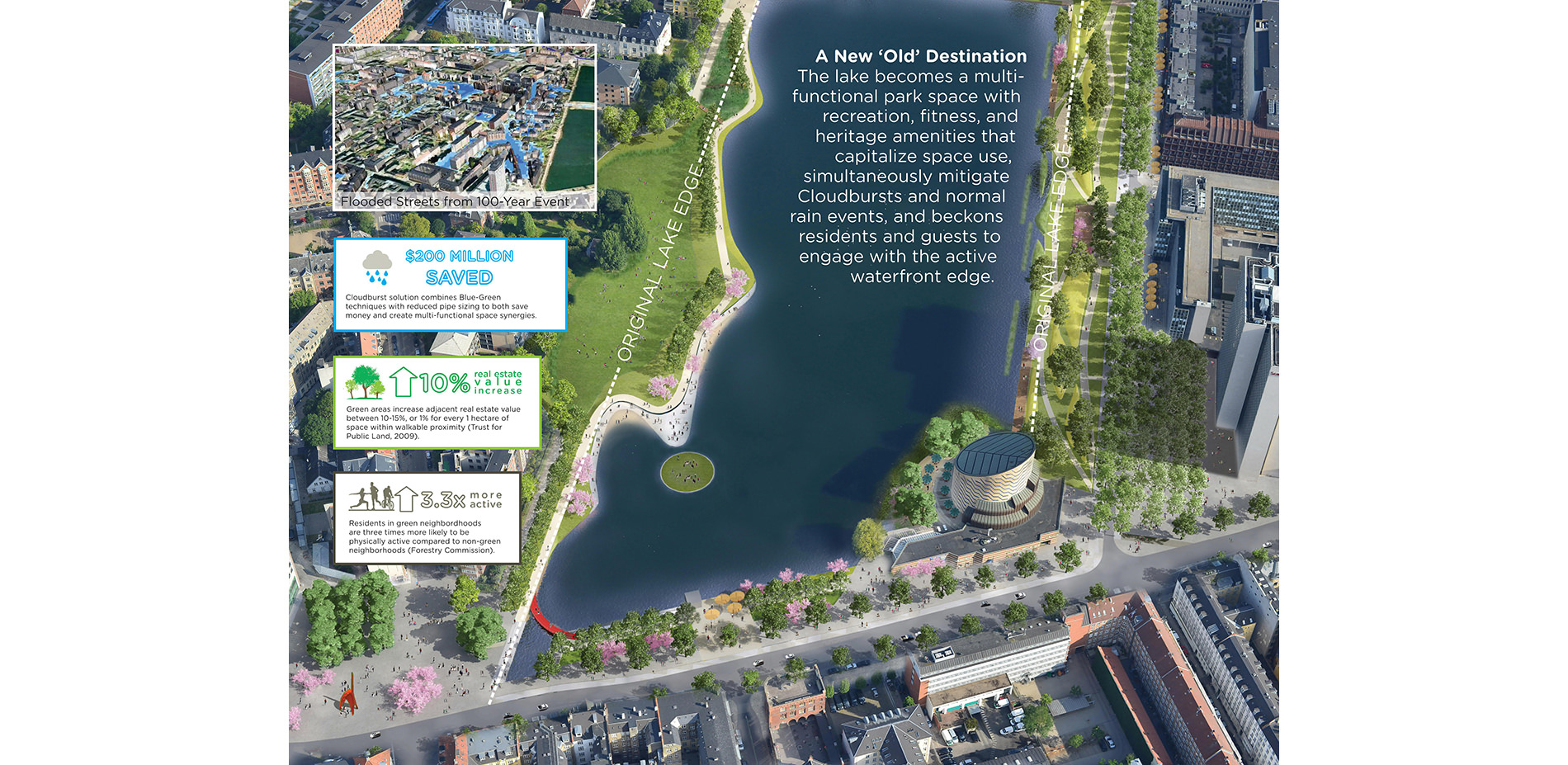
A New ‘Old’ Destination
The lake becomes a multifunctional park space with recreation, fitness, and heritage amenities that capitalize space use, simultaneously mitigate Cloudbursts and normal rain events, and beckons residents and guests to engage with the active waterfront edge.
Photo Credit: Ramboll and Ramboll Studio Dreiseitl
Media: Please submit high-resolution image requests to images@asla.org.


















